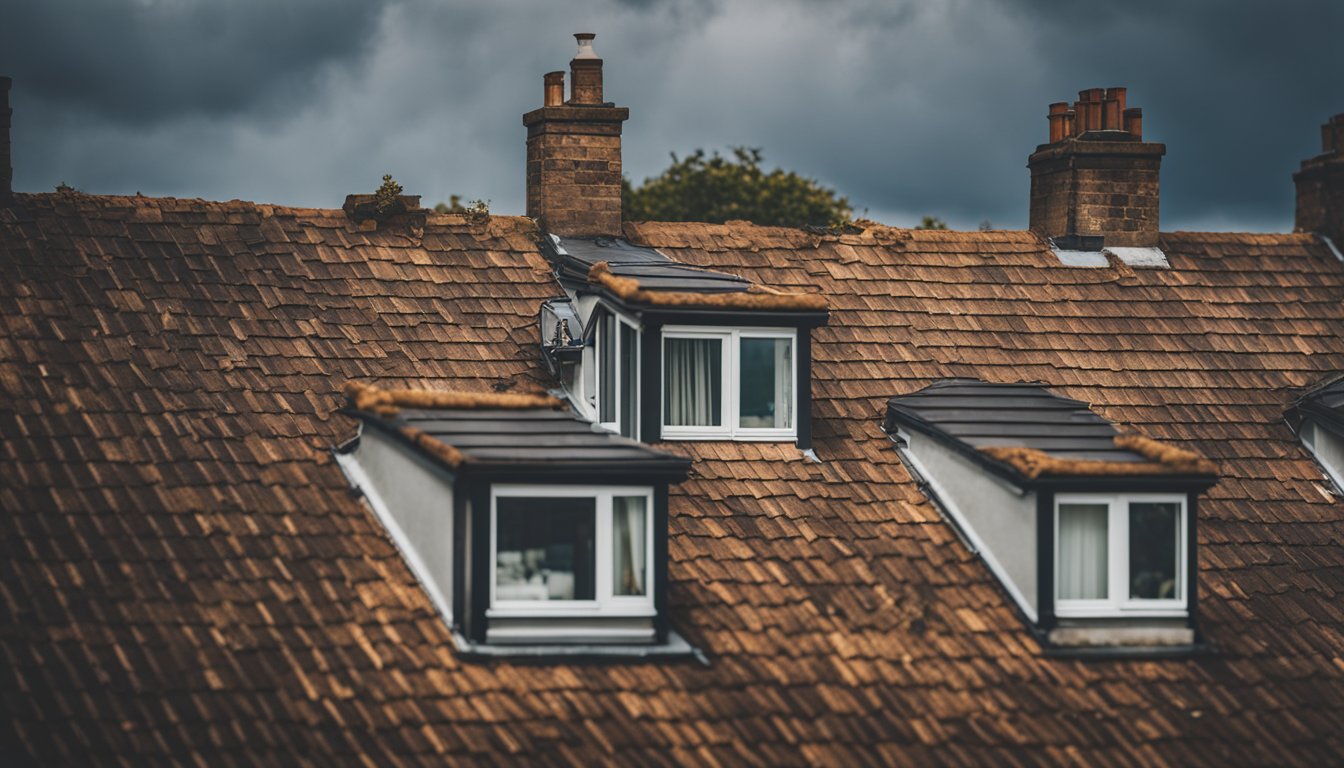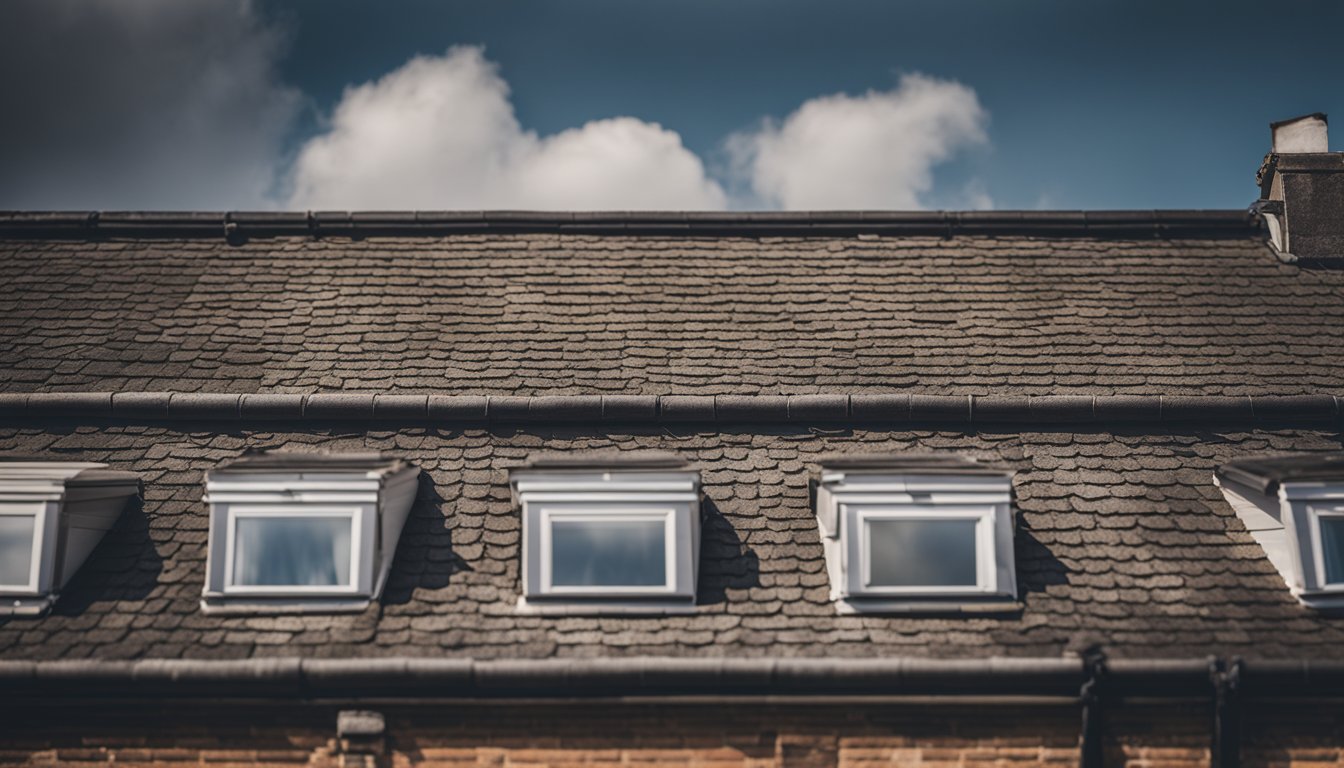Late updated: 04 Oct 2024 08:10
Written by: Oliver Bennett
The Impact Of Weather On UK Roof Longevity: Key Factors Explained
The roof is an essential part of any building in the UK, providing crucial protection against varying weather conditions. As residents of a region known for its unpredictable climate, we recognise how environmental factors can shape the lifespan of our roofs. Recognising the impact of weather on roof longevity is vital for homeowners aiming to preserve their property's integrity.

Rain, sun, wind, and even snow play distinctive roles in wearing down roofing materials. Whether it's the constant dampness from rain or the drying effects of sunlight, each weather element influences the durability of our roofs differently. By understanding these effects and the resilience of different materials, we can make informed choices to enhance roof longevity.
Ensuring our roofs can withstand the UK's climate comes down to material choice and regular maintenance. These proactive measures are key to fending off premature deterioration and costly repairs, ultimately supporting the home's overall health.
Key Takeaways
- Weather impacts roof lifespan through various elements.
- Material resilience is key to longevity in UK weather.
- Regular maintenance ensures prolonged roof life.
Understanding Roofing Materials and Their Weather Resistance
Selecting the right roofing materials involves understanding how different weather conditions influence roof longevity. In the UK, roofs face challenges such as rain, wind, UV rays, and frost. Assessing the weather resistance of various materials helps in choosing a roof that withstands these elements.
Common Roofing Materials in the UK
In the UK, the most commonly used roofing materials include asphalt shingles, metal roofing, slate roofing, clay tiles, concrete tiles, and synthetic options like EPDM, TPO, and PVC.
Asphalt shingles offer cost-effectiveness and easy installation. Metal roofs, renowned for their durability, reflect heat well. Slate roofing is traditional and known for its long lifespan. Concrete and clay tiles provide excellent weather resistance but are heavy. EPDM and PVC are popular for flat roofs, while TPO offers energy efficiency.
Effects of Weather Conditions on Different Roof Types
Weather significantly impacts roofing materials. UV radiation can cause asphalt shingles to crack. Metal roofs may rust in coastal areas with high salt content. Slate roofs handle rain well but can be susceptible to frost damage.
Water infiltration poses risks, particularly for flat roofs with poor drainage. Wind can uplift shingles and tiles if not properly secured. Understanding these effects is crucial for adapting roofs to withstand local weather patterns. We must also consider roof pitch and design in this context.
Advancements in Roofing Technology for Increased Durability
Advancements in roofing technology aim to enhance durability and weather resistance. Developments include coatings for increased UV protection and breathable membranes to prevent water damage while allowing moisture to escape.
Energy-efficient solutions like reflective metal coatings reduce heat absorption. Improved installation techniques for EPDM and TPO ensure longevity under harsh conditions. Moreover, automation in manufacturing results in precision-cut materials for better fitting and reduced waste. Adopting these technologies enables us to extend roof lifespan and reliability.
Best Practices for Roof Maintenance in the UK Climate

To maximise roof longevity in the UK's varied climate, it's crucial to implement regular maintenance routines and address weather-related challenges. These practices must be tailored to tackle common issues like moisture, UV exposure, and temperature extremes. Regular inspections, preventive strategies, and thoughtful approaches to replacement can significantly enhance roof performance over time.
The Role of Regular Inspections and Maintenance Routines
Regular inspections are essential to identify potential roof problems before they escalate. We should carry out these inspections at least twice a year, ideally in spring and autumn, to assess the impact of seasonal changes. During inspections, focus on signs of wear such as loose or missing shingles, which can be exacerbated by wind and rain.
Implementing robust maintenance routines ensures timely repairs and optimal roof performance. Cleaning gutters to prevent blockages and ensuring proper ventilation are critical. This prevents moisture build-up and reduces the risk of ice dams during colder months. Regular maintenance is especially important for commercial roofing, where the stakes of roof failures are high.
Preventing and Addressing Weather-Related Roof Damage
Weather-related damage can significantly impact roof lifespan. To mitigate this, we should prioritise addressing common issues like leaks, which can result from rain and moisture infiltration. Proper ventilation and insulation also play roles in maintaining roof health by preventing condensation and managing interior temperatures.
It's important to address damage promptly, especially after severe weather events like storms or hail. Regular gutter maintenance can prevent water accumulation on the roof, reducing the risk of leaks. Quick response to any damage ensures that minor issues do not develop into major structural problems.
Strategies for Enhancing Roof Lifespan and Effective Replacement
Enhancing a roof's lifespan involves strategic planning and timely interventions. Factors like installation quality and workmanship significantly influence roof life expectancy. Ensuring the roof pitch and slope are appropriate for the building can also extend its longevity by facilitating water runoff.
When replacement becomes necessary, choosing high-quality materials designed for the climate is crucial. We must factor in UV radiation and air pollution in selecting these materials. Opting for energy-efficient options that improve insulation and ventilation can contribute to lower energy costs and better climate resilience. By taking a comprehensive approach, we can ensure our roofs remain durable and efficient over time.
Frequently Asked Questions

In this section, we address common queries about how the UK's unique weather affects roof longevity. Each topic highlights key factors like roof materials, maintenance practices, and weather impacts.
What factors influence the longevity of roofs in the United Kingdom?
The durability of roofs in the UK is affected by several elements, such as construction materials, installation quality, and regional weather conditions. Frequent exposure to rain, wind, and varying temperatures can accelerate wear. The choice of roofing material and regular maintenance play critical roles in determining how long a roof will last.
What types of roofing materials offer the greatest durability against the UK climate?
Slate and tile roof materials are renowned for their resilience. They can withstand the UK's challenging weather patterns and potentially last up to 100 years with proper care. Their natural resistance to moisture and thermal fluctuations makes them favourable choices for homeowners aiming for long-lasting protection.
How does severe weather affect the lifespan of roofing in the UK?
Severe weather conditions, including strong winds, heavy rainfall, and temperature extremes, can significantly shorten a roof's lifespan. These elements can cause physical damage and increase the risk of leaks or structural issues over time. Protective measures and timely repairs help mitigate such weather-related impacts.
What maintenance steps can extend the life expectancy of a UK roof?
Routine inspections and maintenance can considerably extend a roof’s life. Removing debris, clearing gutters, and promptly addressing any damage are crucial steps. Regular checks ensure early detection of potential issues, allowing us to preserve the roof's integrity and avoid costly repairs.
What are the common signs of weather-related wear on roofs in the UK?
Common indicators of weather damage include missing or broken tiles, leaks, and sagging areas. Moss growth and discolouration may also signal moisture retention. Noticing these signs early and addressing them promptly is vital to maintaining the roof’s structural soundness.
How often should roofs in the UK be inspected to prevent weather damage?
We recommend roof inspections at least twice a year, ideally in spring and autumn. This timing ensures that any damage from severe winter conditions or summer storms is identified and rectified. Regular inspections help safeguard against unexpected deterioration and prolong a roof's service life.
